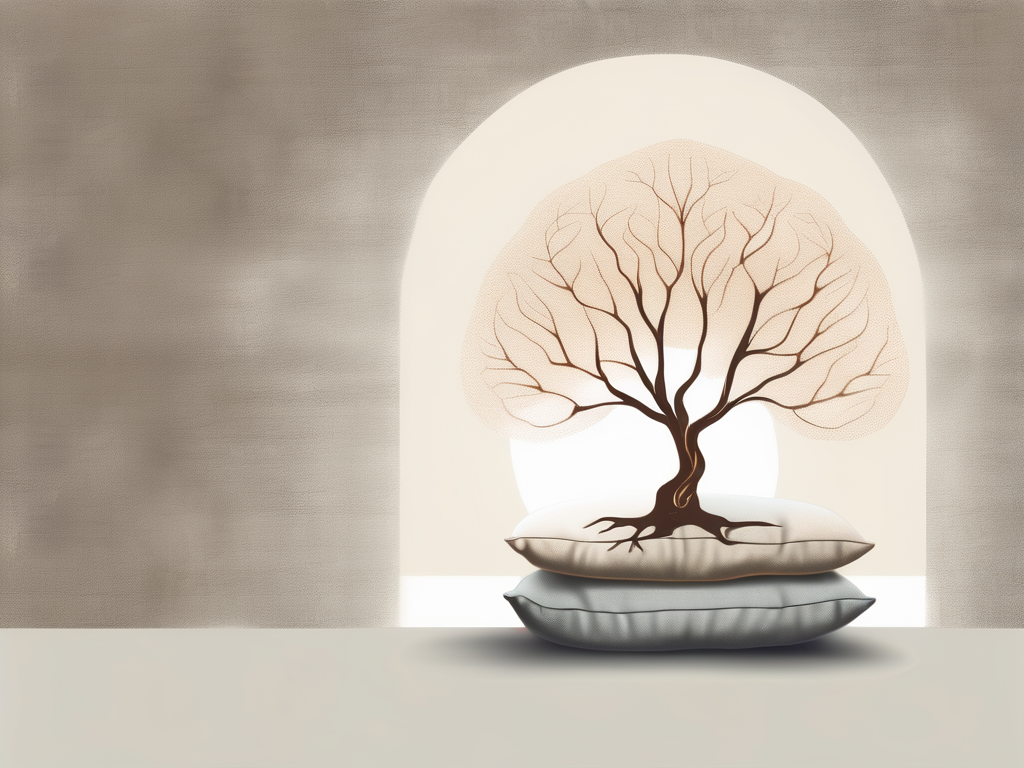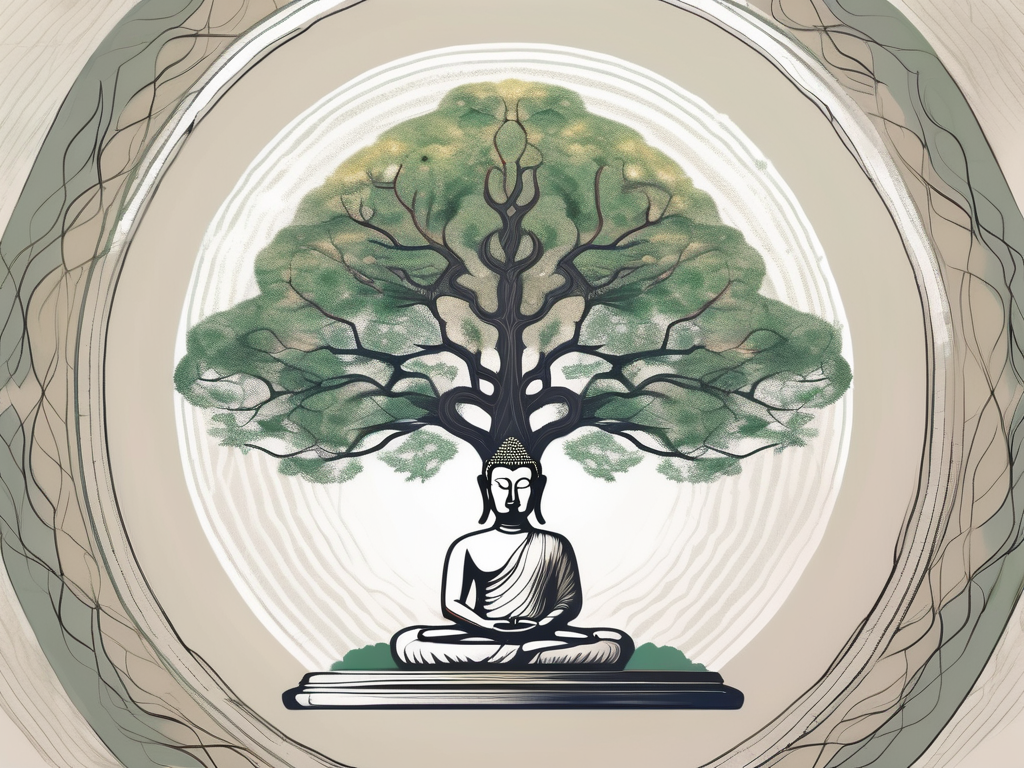Are you curious about the mystical world of Buddhist figures? Whether you are a devout follower or simply interested in understanding their symbolism, this comprehensive guide will take you on a journey through the mesmerizing realm of Buddhist art, philosophy, and meditation practices. In this article, we will unravel the deep insights hidden behind these sacred figures, helping you appreciate their profound meanings. So, brace yourself as we embark on this enlightening exploration together!
Understanding Buddhism: An Overview
Buddhism, one of the world’s major religions, originated in ancient India over 2,500 years ago. It was founded by Siddhartha Gautama, who later became known as the Buddha, meaning “the enlightened one.” At its core, Buddhism is a path to spiritual awakening and liberation from the cycle of suffering.
The Origins of Buddhism
Before delving into the significance of Buddhist figures, it is essential to grasp the origins of Buddhism. Siddhartha Gautama, a prince born into a life of luxury, renounced his privileged existence in search of truth and a remedy for human suffering. He embarked on a profound spiritual journey, leaving behind his palace, his wife, and his newborn child.
For six years, Siddhartha Gautama wandered through forests and engaged in rigorous ascetic practices, seeking enlightenment. He studied under renowned spiritual teachers, mastering various meditation techniques and philosophical systems. However, he remained unsatisfied, feeling that he had not yet found the ultimate truth.
Finally, Siddhartha Gautama decided to pursue a different path. He sat under a Bodhi tree in Bodh Gaya, vowing not to rise until he had attained enlightenment. After days of deep meditation, he experienced a profound awakening. He gained insight into the nature of existence, the causes of suffering, and the path to liberation.
With his newfound wisdom, Siddhartha Gautama became the Buddha, the awakened one. He dedicated the rest of his life to teaching others about the path to enlightenment, spreading his teachings far and wide.
Thus, Buddhism began, spreading its wisdom across Asia and beyond. It gained followers from various backgrounds, transcending social barriers and cultural boundaries.
Core Beliefs and Principles of Buddhism
Central to Buddhism are the Four Noble Truths, which reveal the nature of suffering and the path to liberation. These truths emphasize the impermanence and interconnectedness of all things, urging followers to cultivate mindfulness and compassion.
The First Noble Truth acknowledges the existence of suffering in the world. It recognizes that life is inherently unsatisfactory, filled with pain, loss, and dissatisfaction. This truth encourages individuals to confront suffering honestly and seek its cessation.
The Second Noble Truth investigates the causes of suffering. It identifies craving, attachment, and ignorance as the root causes of human suffering. By understanding and addressing these causes, individuals can alleviate suffering and find lasting happiness.
The Third Noble Truth offers hope by proclaiming that suffering can be overcome. It asserts that liberation from suffering is attainable through the cessation of craving and attachment. By letting go of desires and attachments, individuals can achieve a state of profound peace and contentment.
The Fourth Noble Truth outlines the Eightfold Path, which provides a practical guide to ethical conduct, meditation, and wisdom. This path consists of Right View, Right Intention, Right Speech, Right Action, Right Livelihood, Right Effort, Right Mindfulness, and Right Concentration. By following this path, individuals can cultivate virtuous qualities and develop the wisdom necessary for enlightenment.
Buddhism also encompasses various other teachings and practices, such as the concept of karma, rebirth, and the importance of meditation. It encourages individuals to engage in self-reflection, to question the nature of reality, and to cultivate compassion towards all living beings.
Throughout history, Buddhism has evolved and diversified, giving rise to different schools and traditions. From Theravada Buddhism in Southeast Asia to Mahayana Buddhism in East Asia, each branch offers unique perspectives and practices while sharing a common goal of awakening and liberation.
The Significance of Buddhist Figures
Buddhist figures, through their symbolism and iconography, play an integral role in the religion. They not only embody the teachings of the Buddha but also serve as objects of devotion and inspiration for practitioners. Let’s explore their profound significance.
Buddhism, a religion that originated in ancient India, has spread across the world, influencing countless individuals with its teachings of compassion, mindfulness, and enlightenment. Central to the practice of Buddhism are the various figures and icons that represent the core principles and values of this spiritual tradition.
The Role of Iconography in Buddhism
In Buddhism, icons and images are used as a means to visualize abstract concepts and make them more accessible. Symbolic representations, such as the lotus flower or the Wheel of Dharma, help convey profound teachings in a tangible and visual form. These visual aids assist in deepening one’s understanding and facilitate a connection with the divine.
For example, the lotus flower, often depicted in Buddhist art, symbolizes purity and spiritual awakening. Just as the lotus grows from the muddy waters and rises above, so too can individuals transcend the challenges and suffering of life to attain enlightenment.
The Wheel of Dharma, another important symbol in Buddhism, represents the teachings of the Buddha. It is often depicted as a wheel with eight spokes, each representing one of the Eightfold Path, which is the path to liberation from suffering. The Wheel of Dharma serves as a reminder to practitioners to follow the teachings and strive for spiritual growth.
Symbolism and Interpretation of Buddhist Figures
Each Buddhist figure carries a wealth of symbolism, providing layers of meaning for contemplation. Take, for instance, the Buddha, the central figure of Buddhism, known for his compassionate wisdom and enlightened state. His statue depicts him in various poses, each representing different aspects of his teachings and qualities.
The most common pose of the Buddha is the meditative pose, also known as the “lotus position.” This posture signifies inner peace, tranquility, and deep meditation. The Buddha’s serene expression and closed eyes symbolize the attainment of enlightenment and the transcendence of worldly desires.
Bhaisajyaguru, the Medicine Buddha, signifies healing and wellbeing. His statue often depicts him holding a bowl of healing nectar, symbolizing the power to heal physical and mental ailments. Devotees turn to the Medicine Buddha for guidance and blessings in their pursuit of health and well-being.
Avalokiteshvara, also known as the Bodhisattva of Compassion, embodies boundless compassion. Often depicted with multiple arms and eyes, Avalokiteshvara symbolizes the ability to see and reach out to all beings in need. Devotees invoke Avalokiteshvara’s compassion to cultivate their own sense of empathy and kindness towards others.
These are just a few examples of the rich symbolism and interpretation found in Buddhist figures. Each figure represents a different aspect of the Buddha’s teachings and serves as a source of inspiration and guidance for practitioners on their spiritual journey.
A Closer Look at Key Buddhist Figures
Now, let’s take a closer look at some of the key Buddhist figures, who continue to captivate the hearts and minds of millions around the world:
The Buddha: The Enlightened One
The Buddha, with his serene countenance and gentle smile, represents the ultimate goal of all Buddhists – enlightenment. Born as Siddhartha Gautama in ancient India, he renounced his luxurious life to seek spiritual awakening. After years of rigorous meditation and self-reflection, he attained enlightenment under the Bodhi tree. The Buddha’s teachings, known as the Dharma, reflect the path to liberation, emphasizing the importance of mindfulness, compassion, and wisdom. His image, often depicted in various poses, reminds us to strive for personal awakening and to support others on their own spiritual journeys.
Legend has it that upon his enlightenment, the Buddha experienced a profound sense of peace and understanding. He realized the impermanence of all things and the interconnectedness of all beings. This realization became the foundation of his teachings, which continue to inspire and guide millions of people today.
Bodhisattvas: The Compassionate Beings
Bodhisattvas are compassionate beings who have chosen to delay their entry into nirvana to assist others on their journey. They embody the ideal of selfless service and compassion towards all sentient beings. Avalokiteshvara, the Bodhisattva of Compassion, is one of the most revered figures in Mahayana Buddhism. The imagery of Avalokiteshvara, often depicted with multiple arms and eyes, represents his ability to hear the cries of all sentient beings and provide guidance.
According to Buddhist belief, Avalokiteshvara made a vow to liberate all beings from suffering and has taken countless forms throughout history to fulfill this vow. In each form, he manifests compassion and wisdom, offering solace and guidance to those in need. Bodhisattvas like Avalokiteshvara serve as role models for Buddhists, inspiring them to cultivate compassion and dedicate their lives to the well-being of others.
Devas and Asuras: The Celestial Beings and Demons
In Buddhist cosmology, devas and asuras are celestial beings and demons, respectively. Depicted artistically, they remind us of the dualistic nature of existence and the constant struggle between good and evil. Devas are often associated with heavenly realms and are believed to possess great beauty and blissful states of existence. Asuras, on the other hand, represent the darker side of existence, characterized by jealousy, aggression, and discontent.
Just like humans, devas and asuras are subject to the cycle of birth, death, and rebirth, highlighting the transitory nature of all beings. Their inclusion in Buddhist teachings serves as a reminder that even beings in heavenly or demonic realms are not exempt from the universal law of impermanence. By contemplating the existence of devas and asuras, Buddhists are encouraged to cultivate equanimity and strive for liberation from all forms of existence.
It is important to note that in Buddhism, the focus is not on worshiping these celestial beings or demons, but rather on understanding the nature of existence and the path to liberation.
The Artistic Representation of Buddhist Figures
Buddhist art, spanning from ancient cave paintings to intricate sculptures and vibrant thangkas, reflects the devotion and spirituality of followers throughout history. These artistic representations not only awe us with their beauty but also provide a glimpse into the evolution of Buddhist aesthetics.
One fascinating aspect of Buddhist art is its ability to transcend time and space, allowing us to witness the evolution of artistic styles and techniques. From the ancient Indian art to the magnificent sculptures of Southeast Asia, each region has contributed its own unique interpretation of Buddhist figures.
Let’s delve deeper into the evolution of Buddhist art. Beginning with ancient Indian art, Buddhist sculptures and paintings evolved over time, adapting to the cultural influences of different regions. The early Buddhist art of India, characterized by the serene Gandhara statues, showcased the influence of Hellenistic art, with its realistic portrayal of human figures.
As Buddhism spread to other parts of Asia, such as China and Japan, it assimilated with local artistic traditions, giving rise to new and distinctive styles. The graceful Tang dynasty artwork, for example, combined elements of Chinese aesthetics with Buddhist iconography, resulting in a harmonious blend of spirituality and elegance.
Understanding the aesthetics of Buddhist figures is key to appreciating their profound impact. The careful craftsmanship behind these representations is meant to evoke specific emotions and insights. The graceful mudras (hand gestures), for instance, symbolize various aspects of Buddhist teachings, such as compassion, wisdom, and fearlessness.
Moreover, the serene expressions and intricate details found in Buddhist art reflect the values of peace, harmony, and enlightenment. The artists behind these masterpieces sought to capture the essence of Buddhist teachings, using their creative skills to inspire devotion and contemplation.
By appreciating the aesthetics of these figures, we can experience a deeper connection with their spiritual essence. The vibrant colors and intricate patterns of thangkas, for instance, invite us to embark on a visual journey through the realms of Buddhist cosmology, while the serene expressions of Buddha statues encourage us to cultivate inner peace and mindfulness.
In conclusion, the artistic representation of Buddhist figures is a testament to the rich cultural heritage and spiritual depth of Buddhism. From the ancient cave paintings to the intricate sculptures, each piece of art tells a story of devotion, creativity, and the quest for enlightenment. By exploring the evolution of Buddhist aesthetics, we gain a greater appreciation for the profound impact of these artistic representations on both the individual and the collective consciousness.
The Role of Buddhist Figures in Meditation and Rituals
Buddhist figures are not merely objects of admiration; they also play important roles in the practices and rituals of Buddhism, helping practitioners deepen their spiritual experiences.
Buddhist Figures in Meditation Practices
Meditation is a vital aspect of Buddhist practice, and visualizing specific figures during meditation can enhance concentration and deepen insight. Whether focusing on the image of the Buddha or visualizing a bodhisattva, these figures serve as focal points for cultivating mindfulness and developing qualities such as compassion and wisdom.
The Use of Buddhist Figures in Rituals and Ceremonies
Rituals and ceremonies form an integral part of Buddhist traditions, and figures like the Buddha and bodhisattvas are honored and revered during these occasions. Offerings, prayers, and prostrations are ways in which practitioners express their devotion and seek blessings, embodying the teachings and qualities represented by the figures.
As we conclude our comprehensive guide on the meanings of Buddhist figures, we hope you have gained a deeper appreciation for the symbolism, artistry, and spiritual aspects they embody. Remember, the true essence of these figures lies not merely in their physical representations, but in the insights and transformations they inspire within us. So, let the wisdom and compassion of Buddhist figures guide you on your own journey of self-discovery and awakening.












